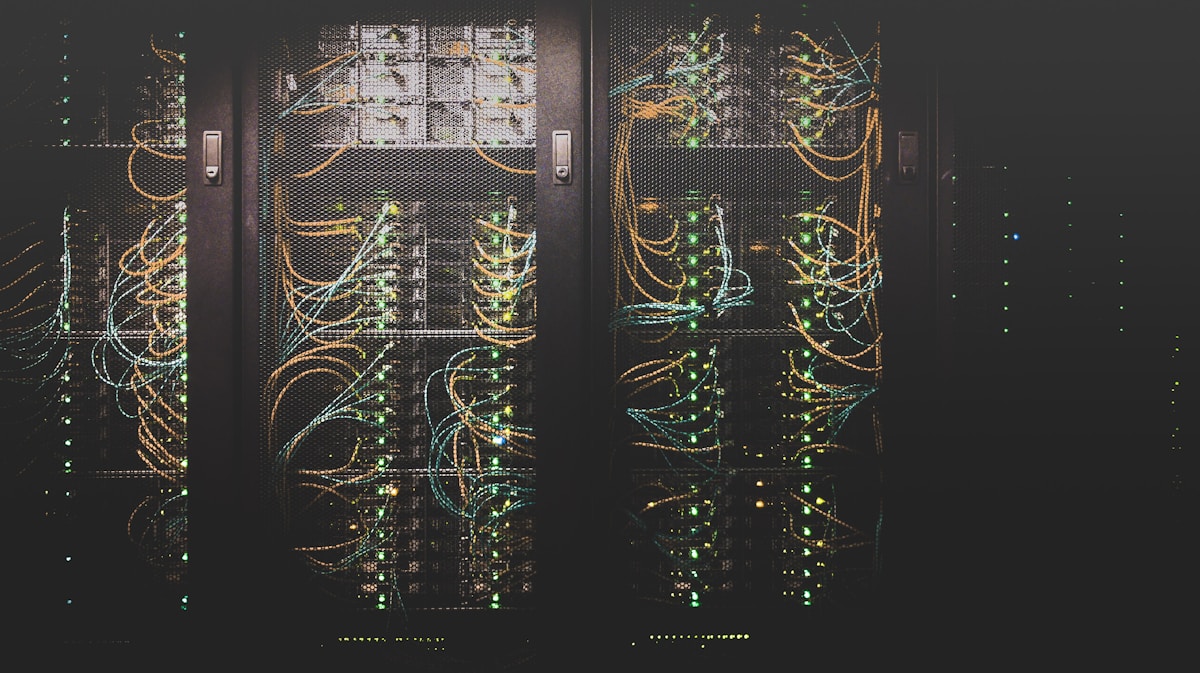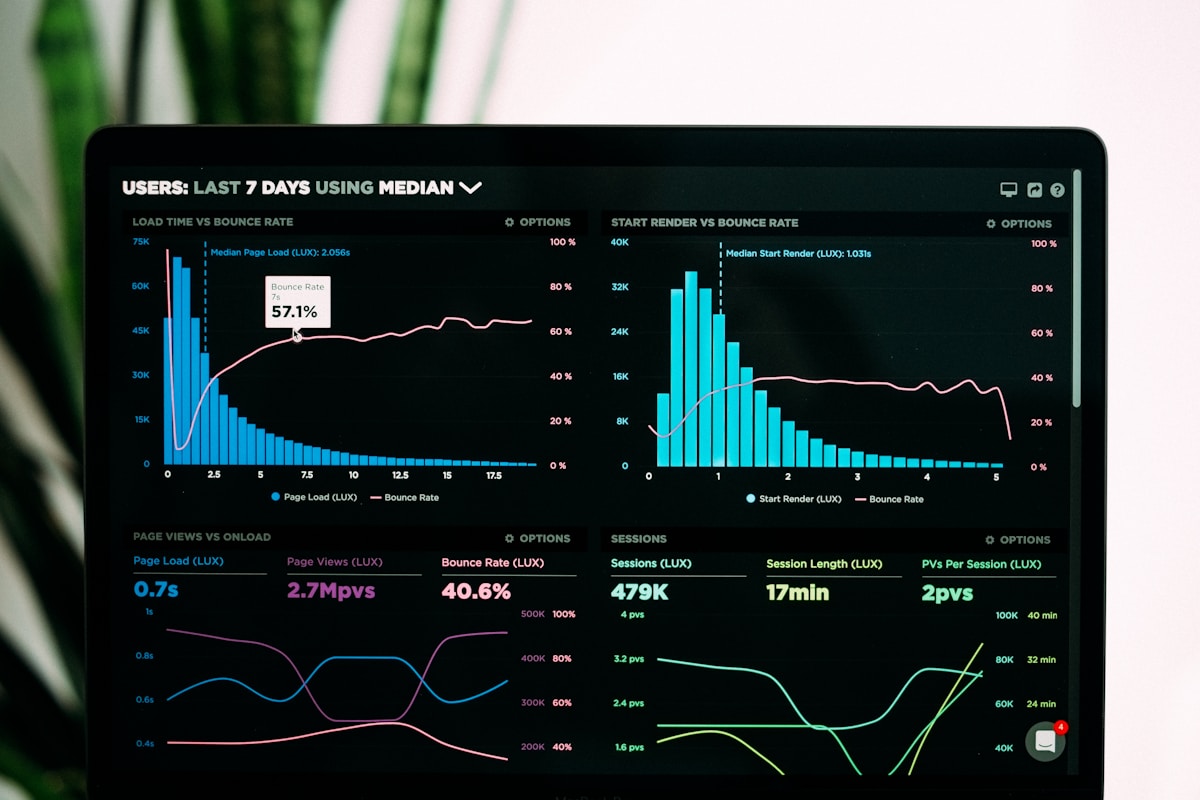DevOps 2025: GitOps, Platform Engineering, DevSecOps và AI-Driven Automation
DevOps 2025: Chuyển Đổi Từ Văn Hóa Đến Nền Tảng Thông Minh
Năm 2025, DevOps không còn chỉ là sự kết hợp giữa Development và Operations. Nó đã phát triển thành một hệ sinh thái phức tạp bao gồm GitOps cho quản lý cấu hình, Platform Engineering để tạo nền tảng tự phục vụ, DevSecOps tích hợp bảo mật từ đầu, và AI-driven automation để tối ưu hóa quy trình. Bài viết này khám phá chi tiết các xu hướng mới, công cụ hiện đại, và thực hành tốt nhất trong thế giới DevOps hiện đại.

1. GitOps: Quản Lý Cấu Hình và Triển Khai Dựa Trên Git
GitOps là một phương pháp quản lý cơ sở hạ tầng và ứng dụng sử dụng Git làm nguồn sự thật duy nhất. Tất cả các thay đổi về cấu hình, code, và infrastructure đều được quản lý thông qua Git repository, đảm bảo tính minh bạch, khả năng kiểm tra, và khả năng phục hồi.
1.1. Nguyên Tắc Cốt Lõi của GitOps
- Declarative Configuration: Mô tả trạng thái mong muốn của hệ thống thay vì các bước thực hiện.
- Version Control Everything: Mọi thay đổi đều được version control trong Git.
- Automated Reconciliation: Hệ thống tự động đồng bộ trạng thái thực tế với trạng thái mong muốn.
- Continuous Delivery: Tự động triển khai khi có thay đổi trong Git.
1.2. Công Cụ GitOps Phổ Biến
- ArgoCD: GitOps controller cho Kubernetes, hỗ trợ multi-cluster, RBAC, và webhook.
- Flux: CNCF project, tích hợp sâu với Kubernetes, hỗ trợ image automation và multi-tenancy.
- Jenkins X: CI/CD platform với GitOps built-in, tự động tạo preview environments.
- Weave GitOps: Enterprise solution với policy engine và compliance.
1.3. Kiến Trúc GitOps Điển Hình
Một kiến trúc GitOps điển hình bao gồm:
- Git Repository: Chứa toàn bộ cấu hình (Kubernetes manifests, Helm charts, Terraform files).
- GitOps Controller: Theo dõi Git repository và đồng bộ với cluster.
- Container Registry: Lưu trữ container images, được scan tự động.
- Monitoring & Alerting: Theo dõi trạng thái đồng bộ và drift detection.

1.4. Lợi Ích của GitOps
- Tăng Tốc Độ Phát Hành: Tự động hóa hoàn toàn quy trình triển khai, giảm thời gian từ commit đến production.
- Cải Thiện Bảo Mật: Mọi thay đổi đều được review qua pull request, audit trail đầy đủ.
- Khả Năng Phục Hồi: Dễ dàng rollback về bất kỳ commit nào, disaster recovery đơn giản hơn.
- Compliance: Tuân thủ các yêu cầu về audit và governance.
2. Platform Engineering: Xây Dựng Nền Tảng Tự Phục Vụ
Platform Engineering là một mô hình mới nổi, tập trung vào việc xây dựng và duy trì một nền tảng nội bộ (Internal Developer Platform) cho phép các đội phát triển tự phục vụ các tài nguyên và công cụ cần thiết mà không cần hiểu biết sâu về infrastructure.
2.1. Tại Sao Cần Platform Engineering?
- Giảm Cognitive Load: Developers không cần học Kubernetes, Terraform, hoặc các công cụ infrastructure phức tạp.
- Tăng Velocity: Tự động hóa các tác vụ lặp đi lặp lại, giảm thời gian setup môi trường.
- Chuẩn Hóa: Đảm bảo tất cả teams tuân theo best practices và security policies.
- Cost Optimization: Tối ưu hóa việc sử dụng tài nguyên thông qua tự động hóa.
2.2. Thành Phần Của Internal Developer Platform
- Self-Service Portal: Web UI hoặc CLI để developers tạo environments, deploy applications.
- Application Templates: Scaffolding cho các loại ứng dụng phổ biến (microservice, batch job, API).
- CI/CD Pipelines: Pre-configured pipelines với security scanning, testing, deployment.
- Observability Stack: Logging, metrics, tracing được tích hợp sẵn.
- Resource Management: Auto-scaling, cost optimization, resource quotas.
2.3. Công Cụ và Framework
- Backstage: Open-source platform của Spotify, cung cấp software catalog và developer portal.
- Humanitec: Platform Orchestrator, tự động tạo environments và manage configurations.
- Crossplane: Kubernetes-native control plane để quản lý cloud resources.
- Kratix: Framework để xây dựng platform-as-a-product.

2.4. Best Practices
- Product Mindset: Xem platform như một sản phẩm, có roadmap, feedback loops.
- Developer Experience First: Ưu tiên trải nghiệm của developers, giảm friction.
- Progressive Disclosure: Cung cấp defaults tốt, nhưng cho phép customization khi cần.
- Continuous Improvement: Thu thập metrics về usage, errors, và developer satisfaction.
3. DevSecOps: Tích Hợp Bảo Mật Từ Đầu
DevSecOps mở rộng DevOps bằng cách tích hợp bảo mật vào mọi giai đoạn của vòng đời phát triển phần mềm. Thay vì kiểm tra bảo mật ở cuối, bảo mật trở thành trách nhiệm của mọi người và được tự động hóa trong CI/CD pipeline.
3.1. Shift-Left Security
Shift-left security có nghĩa là di chuyển các hoạt động bảo mật sớm hơn trong vòng đời phát triển:
- Threat Modeling: Phân tích rủi ro bảo mật ngay từ giai đoạn thiết kế.
- Secure Coding: Training developers về security best practices, sử dụng linters và static analysis.
- Dependency Scanning: Tự động scan dependencies cho vulnerabilities trong build process.
- Container Security: Scan container images cho vulnerabilities và misconfigurations.
3.2. Security Scanning trong CI/CD
- SAST (Static Application Security Testing): SonarQube, Checkmarx, Semgrep để phát hiện lỗ hổng trong code.
- DAST (Dynamic Application Security Testing): OWASP ZAP, Burp Suite để test ứng dụng đang chạy.
- SCA (Software Composition Analysis): Snyk, WhiteSource để scan dependencies.
- Container Scanning: Trivy, Clair, Aqua Security để scan container images.
- Infrastructure Scanning: Checkov, Terrascan để scan IaC files.
3.3. Secrets Management
Quản lý secrets an toàn là một phần quan trọng của DevSecOps:
- HashiCorp Vault: Centralized secrets management với dynamic secrets và encryption.
- AWS Secrets Manager: Managed service với automatic rotation.
- Azure Key Vault: Integrated với Azure services và Azure AD.
- Sealed Secrets: Kubernetes-native solution để encrypt secrets trong Git.
3.4. Runtime Security
- Falco: Runtime security monitoring cho containers và Kubernetes.
- OPA (Open Policy Agent): Policy engine để enforce security policies.
- Network Policies: Kubernetes network policies để control traffic flow.
- Service Mesh Security: mTLS, authorization policies trong Istio/Linkerd.

4. AI và Machine Learning trong DevOps
AI và ML đang cách mạng hóa DevOps bằng cách tự động hóa các tác vụ phức tạp, dự đoán sự cố, và tối ưu hóa hiệu suất. Từ intelligent alerting đến automated remediation, AI đang trở thành một phần không thể thiếu của DevOps toolchain.
4.1. AIOps: AI cho Operations
- Anomaly Detection: ML models để phát hiện bất thường trong metrics và logs.
- Root Cause Analysis: Tự động phân tích logs và metrics để tìm nguyên nhân gốc rễ.
- Predictive Alerting: Dự đoán sự cố trước khi chúng xảy ra dựa trên patterns.
- Intelligent Incident Response: Tự động suggest solutions dựa trên historical incidents.
4.2. AI trong CI/CD
- Test Generation: Tự động generate test cases dựa trên code changes.
- Code Review Automation: AI-powered code review để phát hiện bugs và security issues.
- Deployment Optimization: ML models để optimize deployment strategies (canary, blue-green).
- Performance Prediction: Dự đoán performance impact của code changes.
4.3. Công Cụ AI/ML Phổ Biến
- Datadog AI: AI-powered anomaly detection và root cause analysis.
- PagerDuty AIOps: Intelligent incident response và automation.
- GitHub Copilot: AI pair programmer để viết code nhanh hơn.
- Amazon DevOps Guru: ML-powered service để detect operational issues.
4.4. LLM trong DevOps
Large Language Models (LLM) như GPT-4, Claude đang được sử dụng để:
- Documentation Generation: Tự động generate documentation từ code và configurations.
- ChatOps: Natural language interface để interact với DevOps tools.
- Code Explanation: Giải thích code phức tạp và suggest improvements.
- Incident Summarization: Tự động tóm tắt incidents và post-mortems.

5. Observability: Logs, Metrics, và Traces
Observability đã vượt qua monitoring truyền thống. Thay vì chỉ theo dõi các metrics đã biết, observability cho phép bạn hiểu hệ thống từ bên trong thông qua logs, metrics, và distributed tracing.
5.1. Three Pillars of Observability
- Logs: Structured logs với correlation IDs để trace requests qua multiple services.
- Metrics: Time-series data về performance, resource usage, business metrics.
- Traces: Distributed tracing để hiểu flow của requests qua microservices.
5.2. Modern Observability Stack
- OpenTelemetry: Vendor-neutral instrumentation framework, standard cho observability.
- Prometheus + Grafana: Industry standard cho metrics và visualization.
- Loki: Log aggregation system, tương thích với Prometheus labels.
- Jaeger/Tempo: Distributed tracing backends.
- Elastic Stack: ELK (Elasticsearch, Logstash, Kibana) cho log analysis.
5.3. eBPF và Observability
eBPF (extended Berkeley Packet Filter) cho phép chạy code trong kernel space, mở ra khả năng mới cho observability:
- Pixie: eBPF-based observability platform, không cần instrumentation.
- Falco: Runtime security monitoring sử dụng eBPF.
- BCC/BPFtrace: Tools để trace system calls và kernel events.
5.4. Continuous Profiling
Continuous profiling là việc thu thập profiling data liên tục để hiểu performance characteristics:
- Parca: Open-source continuous profiling platform.
- Pyroscope: Continuous profiling với support cho multiple languages.
- Google Cloud Profiler: Managed continuous profiling service.

6. Cloud-Native DevOps
Cloud-native DevOps tận dụng các công nghệ cloud-native như containers, Kubernetes, serverless để xây dựng và vận hành ứng dụng có khả năng mở rộng cao, resilient, và cost-effective.
6.1. Kubernetes và Container Orchestration
- Kubernetes Best Practices: Resource requests/limits, health checks, pod disruption budgets.
- Helm: Package manager cho Kubernetes, quản lý complex applications.
- Kustomize: Template-free customization tool cho Kubernetes manifests.
- Operator Pattern: Extend Kubernetes với custom controllers.
6.2. Serverless DevOps
- Function-as-a-Service: AWS Lambda, Azure Functions, Google Cloud Functions.
- Serverless Framework: Framework để deploy và manage serverless applications.
- Cold Start Optimization: Provisioned concurrency, container reuse strategies.
- Event-Driven Architecture: SQS, EventBridge, Pub/Sub cho serverless integration.
6.3. Service Mesh
Service mesh cung cấp traffic management, security, và observability cho microservices:
- Istio: Most popular service mesh với rich feature set.
- Linkerd: Lightweight, performance-focused service mesh.
- Consul Connect: Service mesh từ HashiCorp, tích hợp với Consul service discovery.
6.4. Multi-Cloud và Hybrid Cloud
- Cloud Abstraction: Tools như Terraform, Crossplane để quản lý multi-cloud.
- Kubernetes Federation: Quản lý multiple Kubernetes clusters.
- Edge Computing: K3s, KubeEdge cho edge deployments.
7. Infrastructure as Code (IaC) Hiện Đại
IaC đã trở thành standard practice, nhưng các công cụ và phương pháp tiếp cận vẫn đang phát triển. Từ declarative configuration đến policy-as-code, IaC đang trở nên mạnh mẽ và an toàn hơn.
7.1. Terraform và HCL
- Terraform Cloud: Managed service với state management và collaboration.
- Terraform Modules: Reusable infrastructure components.
- Terragrunt: Wrapper để giảm duplication và manage multiple environments.
- CDK for Terraform: Use programming languages để define infrastructure.
7.2. Pulumi: IaC với Programming Languages
Pulumi cho phép bạn viết IaC bằng TypeScript, Python, Go, C#:
- Type Safety: Catch errors tại compile time.
- Reusability: Use functions, classes, packages như trong application code.
- Testing: Unit test infrastructure code.
- State Management: Built-in state management với encryption.
7.3. Policy-as-Code
- OPA (Open Policy Agent): General-purpose policy engine.
- Checkov: Static analysis cho IaC files, phát hiện misconfigurations.
- Sentinel: Policy-as-code cho HashiCorp products.
- Cloud Custodian: Rules engine cho cloud governance.
7.4. Drift Detection và Remediation
- Terraform Drift Detection: Tự động phát hiện khi infrastructure thay đổi ngoài Terraform.
- CloudQuery: SQL-based cloud asset inventory và drift detection.
- Infracost: Estimate cloud costs trước khi deploy.

8. CI/CD Pipelines Hiện Đại
CI/CD pipelines đã phát triển từ simple build scripts thành complex workflows với parallel execution, matrix builds, và intelligent caching. Modern CI/CD platforms cung cấp powerful features để tăng tốc độ và reliability.
8.1. GitHub Actions
- Matrix Builds: Test trên multiple versions và platforms cùng lúc.
- Reusable Workflows: Share workflows across repositories.
- Actions Marketplace: Huge ecosystem của pre-built actions.
- Self-Hosted Runners: Run jobs trên infrastructure của bạn.
8.2. GitLab CI/CD
- GitLab Runners: Scalable execution environment.
- CI/CD Templates: Pre-configured pipelines cho common use cases.
- Security Scanning: Built-in SAST, DAST, dependency scanning.
- Review Apps: Tự động tạo preview environments cho merge requests.
8.3. Jenkins X và Tekton
- Jenkins X: Cloud-native CI/CD với GitOps và preview environments.
- Tekton: Kubernetes-native CI/CD framework, cloud-agnostic.
- Pipeline as Code: Define pipelines trong Git, version controlled.
8.4. CI/CD Best Practices
- Fast Feedback: Fail fast, parallelize tests, optimize build times.
- Immutable Artifacts: Build once, deploy everywhere.
- Blue-Green và Canary Deployments: Zero-downtime deployments với rollback capability.
- Feature Flags: Deploy code mà không enable features ngay.
9. Cost Optimization và FinOps
FinOps (Financial Operations) là practice kết hợp financial accountability với cloud operations. Nó giúp organizations optimize cloud spending trong khi vẫn đảm bảo performance và reliability.
9.1. FinOps Principles
- Visibility: Hiểu rõ chi phí ở mọi level (team, project, service).
- Optimization: Continuously optimize costs mà không ảnh hưởng performance.
- Governance: Policies và processes để control spending.
9.2. Cost Optimization Strategies
- Right-Sizing: Match resource allocation với actual usage.
- Reserved Instances và Savings Plans: Commit để giảm costs.
- Spot Instances: Use spare capacity với significant discounts.
- Auto-Scaling: Scale down khi không cần thiết.
- Container Optimization: Optimize container images, use multi-stage builds.
9.3. Cost Monitoring Tools
- CloudHealth: Multi-cloud cost management và optimization.
- Kubecost: Cost monitoring và optimization cho Kubernetes.
- Infracost: Cost estimation cho Terraform.
- CloudZero: Real-time cloud cost intelligence.

10. Chaos Engineering và Resilience
Chaos Engineering là practice của việc intentionally introduce failures vào hệ thống để test khả năng phục hồi. Nó giúp identify weaknesses trước khi chúng gây ra incidents thực tế.
10.1. Principles of Chaos Engineering
- Start Small: Begin với low-impact experiments.
- Hypothesis-Driven: Define expected behavior trước khi run experiments.
- Production-Like: Test trong environments giống production nhất có thể.
- Automated: Automate chaos experiments trong CI/CD.
10.2. Chaos Engineering Tools
- Chaos Monkey: Netflix tool để randomly terminate instances.
- Chaos Mesh: Cloud-native chaos engineering platform cho Kubernetes.
- Litmus: Open-source chaos engineering cho Kubernetes.
- Gremlin: Managed chaos engineering platform.
10.3. Resilience Patterns
- Circuit Breaker: Prevent cascading failures.
- Retry với Exponential Backoff: Handle transient failures.
- Bulkhead: Isolate failures trong một phần của system.
- Timeouts: Prevent indefinite waiting.
11. Developer Experience và Productivity
Developer Experience (DX) là một aspect quan trọng của DevOps. Một good DX giúp developers focus vào building features thay vì fighting với tools và processes.
11.1. Local Development Environments
- Docker Compose: Define và run multi-container applications locally.
- Kubernetes Kind/K3d: Run Kubernetes clusters locally.
- Telepresence: Connect local development với remote Kubernetes cluster.
- Dev Containers: VS Code dev containers để consistent development environments.
11.2. Inner Source và Knowledge Sharing
- Internal Documentation: Comprehensive docs với search và versioning.
- Runbooks: Step-by-step guides cho common operations.
- Post-Mortems: Learn từ incidents, share knowledge.
- Guilds và Communities: Cross-team knowledge sharing.
11.3. Automation của Repetitive Tasks
- CLI Tools: Custom CLI tools để automate common tasks.
- ChatOps: Interact với tools qua chat (Slack, Microsoft Teams).
- Workflow Automation: Zapier, n8n cho non-technical automation.
12. Compliance và Governance
Compliance và governance trở nên quan trọng hơn khi organizations scale và operate trong regulated industries. DevOps practices phải support compliance requirements.
12.1. Compliance Frameworks
- SOC 2: Security, availability, processing integrity.
- ISO 27001: Information security management.
- GDPR: Data protection và privacy.
- HIPAA: Healthcare data protection.
12.2. Compliance Automation
- Policy-as-Code: Enforce policies tự động trong CI/CD.
- Compliance Scanning: Automated scanning cho compliance violations.
- Audit Logging: Comprehensive audit trails cho all operations.
- Access Control: RBAC, ABAC để control access.
13. Edge Computing và IoT DevOps
Edge computing đang trở nên phổ biến với IoT, 5G, và real-time applications. DevOps cho edge có những challenges và opportunities riêng.
13.1. Edge Computing Challenges
- Limited Resources: Edge devices có limited CPU, memory, storage.
- Network Constraints: Intermittent connectivity, high latency.
- Remote Management: Deploy và update applications trên thousands of devices.
- Security: Devices có thể ở unsecured locations.
13.2. Edge DevOps Solutions
- K3s/K3d: Lightweight Kubernetes cho edge.
- KubeEdge: Kubernetes extension cho edge computing.
- Fleet Management: Tools để manage fleets of edge devices.
- OTA Updates: Over-the-air updates cho edge devices.
14. Future Trends và Predictions
DevOps sẽ tiếp tục phát triển với các xu hướng mới:
14.1. AI-First DevOps
- AI sẽ tự động hóa nhiều tác vụ hơn, từ code generation đến incident response.
- ML models sẽ predict và prevent issues trước khi chúng xảy ra.
- Natural language interfaces sẽ làm cho DevOps tools accessible hơn.
14.2. Sustainability và Green DevOps
- Focus vào energy efficiency và carbon footprint.
- Optimize resource usage để reduce environmental impact.
- Green cloud computing practices.
14.3. Quantum Computing và DevOps
- DevOps practices cho quantum computing applications.
- Hybrid classical-quantum systems.
Kết Luận
DevOps năm 2025 là một landscape phong phú và đang phát triển nhanh chóng. Từ GitOps và Platform Engineering đến AI-driven automation và DevSecOps, các practices và tools mới đang giúp organizations build, deploy, và operate software hiệu quả hơn. Key takeaways:
- GitOps đang trở thành standard cho infrastructure và application management.
- Platform Engineering giúp scale DevOps practices across large organizations.
- DevSecOps tích hợp bảo mật vào mọi giai đoạn của development lifecycle.
- AI và ML đang tự động hóa và optimize các quy trình DevOps.
- Observability là foundation cho understanding và improving systems.
- Cost optimization và FinOps đang trở nên quan trọng hơn.
Để thành công trong DevOps 2025, organizations cần invest vào cả tools và culture. Technology alone không đủ; bạn cần một culture của collaboration, continuous learning, và experimentation. Với right practices và tools, bạn có thể build systems that are not only fast và reliable, but also secure, cost-effective, và sustainable.